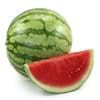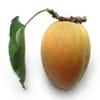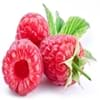Health Benefits
Anti-aging benefits, Anti-inflammatory properties, Asthma treatment, Body hydration, Cancer prevention, Digestive aid, Skin cleansing, Skin rejuvenation
Cancer prevention, Heart care, Maintains healthy cholesterol level, Treatment of skin Diseases
General Benefits
Anti-inflammatory properties, Body hydration, Controls blood pressure, Digestive aid, Maintains healthy cholesterol level
Boosts immune system, Digestive aid, Helps in weight loss, Maintains healthy cholesterol level
Skin Benefits
Anti-aging benefits, Brightens and lightens complexion, Hydrates skin
Anti-aging benefits, Skin rejuvenation, Treatment of skin diseases
Hair Benefits
Promotes longer and healthier hair, Regulates hair growth
Protects hair, Regulates hair growth, Treatment of dandruff
Allergy Symptoms
Breathing difficulty, Decrease in blood pressure, Dizziness, Eczema, Hives, Runny nose, Swelling of mouth, tongue or lips, Watery eyes
Hives, Inflammation of nose, Swelling of mouth, tongue or lips
Side Effects
Allergic reaction, Bloating, Diarrhoea, Indigestion, Intestinal gas, Nausea, Vomiting
Allergic reaction
Best Time to Eat
As a snack in the late afternoon, Don't consume at night and before bed, Eat the fresh ones, avoid mixing with any other foods, don't eat after meal., Strictly avoid empty stomach
Along with meal, As a snack in the late afternoon, Don't consume at night and before bed, Don't eat after meal
Vitamin B5 (Pantothenic Acid)
Vitamin C (Ascorbic Acid)
Vitamin K (Phyllochinone)
Phytosterol
Not Available
Calories in Fresh Fruit with Peel
Not Available
Not Available
Calories in Fresh Fruit without Peel
Calories in Frozen Form
Not Available
Not Available
Calories in Dried Form
Not Available
Calories in Canned Form
Not Available
Not Available
Calories in Jam
Not Available
Type
Berry, Melon
Fruit vegetable, Tropical
Season
Summer
All seasons
Varieties
Sugar Baby, Sangria, Golden Midget, Starlight, Jubilee, Starbrite, Extazy, Stars 'n' Stripes, Mickylee, Yellow Baby, Yellow Doll, Little Baby Flower, Sweet Favorite and Cream of Saskatchewan
Koqo, Tamaikora, Temaipo, Uto Kuro, Samoa, Buco Ni Viti and Kulu Dina
Color
Canary yellow, Coral red, Orange, Salmon yellow, Scarlet red, White
White, Yellow
Origin
Southern Africa
South Pacific
Soil Type
Sandy, Well-drained
Loam, Sand, Sandy loam, Well-drained
Climatic Conditions
Dry, Hot
Humid, Rainfall, Warm
Facts about
- Watermelon contain 91% of water.
- In Japan & Chine, watermelon is a popular gift to bring a host.
- Entire watermelon is edible, even the rinds & seeds.
- There are more than 1200 varieties grown in the world.
- The milky sap of breadfruit tree is used as glue & bark is used to make papers.
- Breadfruit tree produces 1st fruit after 2-3 years from planting & remains productive for decades.
- The seeds of breadfruit are edible.
Top Producer
China
Jamaica
Other Countries
Algeria, Brazil, Egypt, Iran, Kazakhstan, Mexico, Spain, Turkey, United States of America
Africa, India, United States of America
Top Importer
Germany
United States of America
Top Exporter
China
Jamaica
Botanical Name
Citrullus Lanatus
Artocarpus altilis
Synonym
Citrullus vulgaris
Artocarpus communis or Artocarpus incisa
Subkingdom
Tracheobionta
Tracheobionta
Division
Magnoliophyta
Magnoliophyta
Class
Magnoliopsida
Magnoliopsida
Subclass
Dillenhidae
Magnollidae
Order
Cucurbitales
Rosales
Family
Cucurbitaceae
Moraceae
Genus
Citrullus
Artocarpus
Species
C. lanatus
A. altilis
Generic Group
Gourd
Mulberry
Compare Watermelon and Breadfruit
It is important compare Watermelon and Breadfruit as both the fruits have a different nutritional value. Their comparison can be done on the basis of their vitamin and mineral content, calories, benefits as well as characteristics, making it easier for us to choose the best fruit for our diet. Their general health benefits are as follows:
Watermelon Benefits: anti-inflammatory properties, body hydration, controls blood pressure, digestive aid and maintains healthy cholesterol level.
Breadfruit Benefits: boosts immune system, digestive aid, helps in weight loss and maintains healthy cholesterol level.
Fruits are also used as a remedy for various hair problems. The hair benefits of Watermelon are: promotes longer and healthier hair and regulates hair growth and hair benefits of Breadfruit are: protects hair, regulates hair growth and treatment of dandruff. Some fruits are known to cause allergic reactions. The allergy symptoms of first fruit are: breathing difficulty, decrease in blood pressure, dizziness, eczema, hives, runny nose, swelling of mouth tongue or lips and watery eyes and the symptoms of second fruit are: hives, inflammation of nose and swelling of mouth, tongue or lips. Get sorted Watermelon vs Breadfruit comparison with the help of fruit comparison tool by fruitvs.com.









